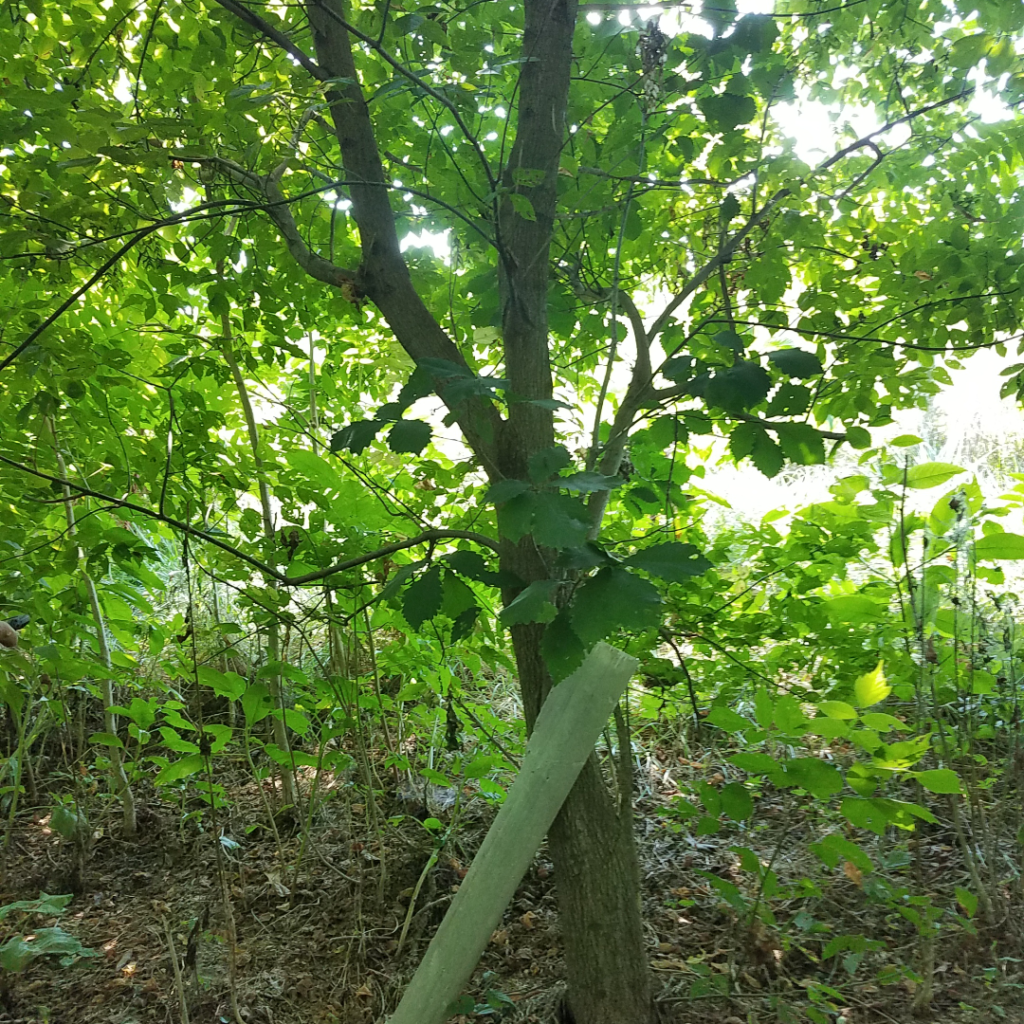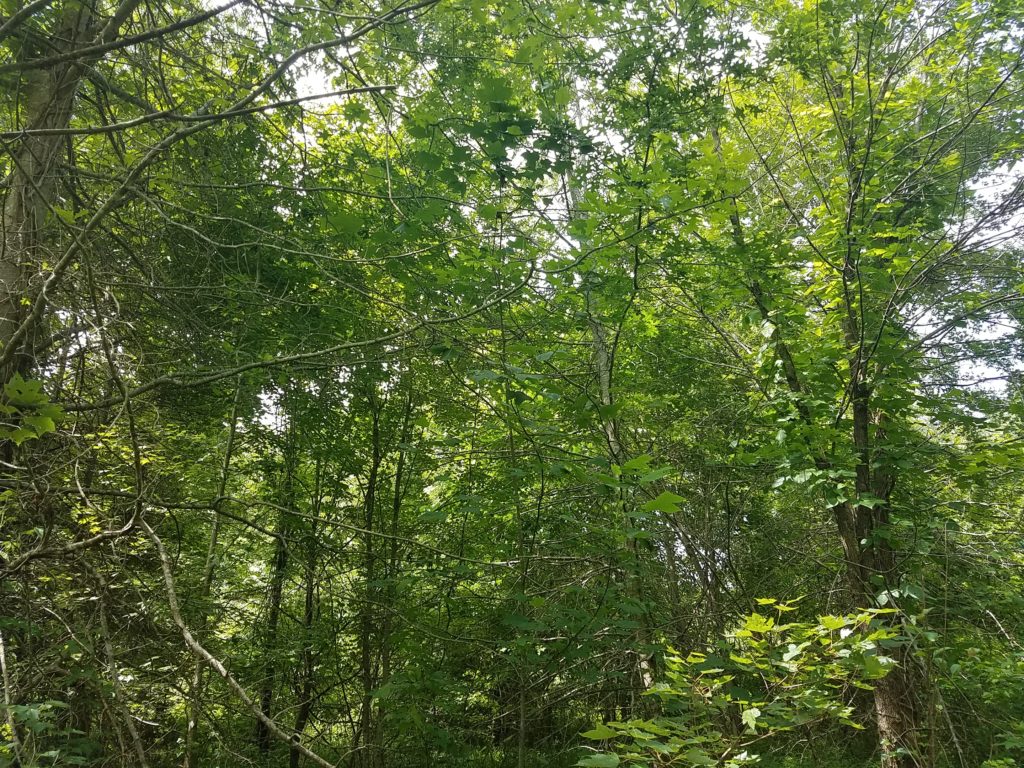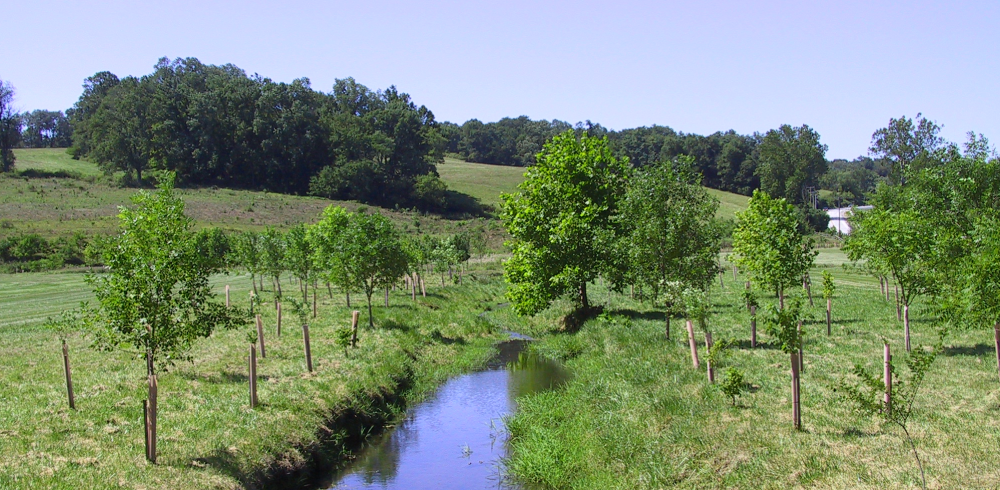 by Sarah Hagan, Virginia Department of Forestry
by Sarah Hagan, Virginia Department of Forestry
When you picture a riparian forest buffer what pops into your head? Neatly mowed rows of trees protected by Tubex tree tubes? We’ve been planting those types of forest buffers for so long it’s hard to conceptualize anything else. But what if you could establish a buffer for a fraction of the cost without having to plant a single tree? Natural forest succession happens when we leave a site undisturbed – grass and weeds turn to shrubs, shrubs turn to trees, and eventually we have a forest. A forester’s job is to help manipulate that natural cycle and speed the process along.
Not all sites are created equal when managing a site for natural regeneration. A nearby and abundant seed source is necessary for new trees to become established. Trees with light, wind-blown seeds such as maples, poplar, sweetgum, loblolly pine, sycamore, and elm are usually a good indicator that the area could regenerate. Other trees such as locust, redbud, persimmon, and cedar are species that seed in and regenerate quickly only if enough trees are in the immediate area to provide seed.
 In some lucky areas of Virginia, trees grow like Jack’s magic beanstalk, but in most places, the ground needs to be prepared in order for seeds to take hold in the soil. Good site preparation is key whether you’re managing a forest for natural regeneration or planting seedlings. Site prep usually involves eliminating existing vegetation in order to give trees (and in this case seeds) every available resource – water, nutrients, and light. Site prep can involve herbicide or mechanical methods such as scalping or disking.
In some lucky areas of Virginia, trees grow like Jack’s magic beanstalk, but in most places, the ground needs to be prepared in order for seeds to take hold in the soil. Good site preparation is key whether you’re managing a forest for natural regeneration or planting seedlings. Site prep usually involves eliminating existing vegetation in order to give trees (and in this case seeds) every available resource – water, nutrients, and light. Site prep can involve herbicide or mechanical methods such as scalping or disking.
Whether your buffer is planted or natural, it’s important to monitor for invasive species (see last month’s blog post!) and talk to a natural resource professional if you have any questions or concerns about the health and maintenance of your trees.

